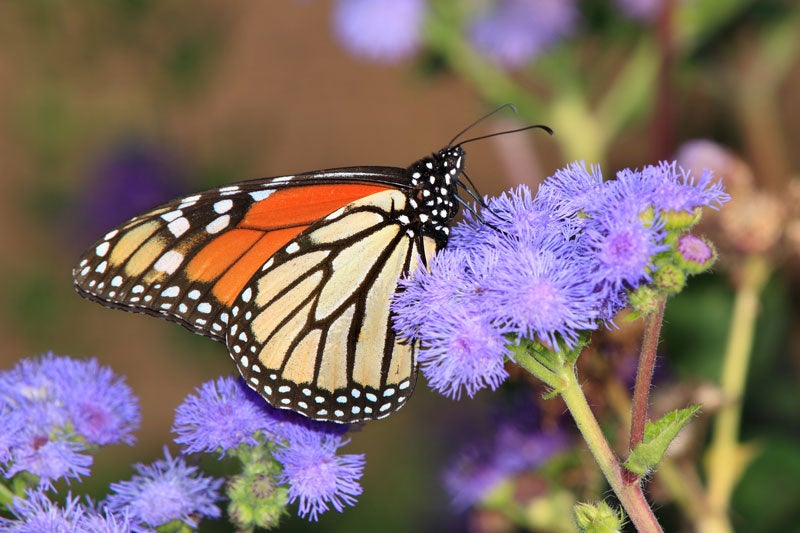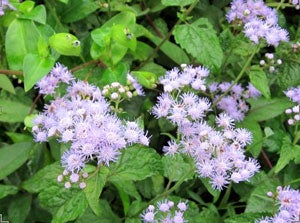Mistflower ideal for monarch butterflies
Published 7:00 am Sunday, August 16, 2020

- This is one of the native perennials highly regarded as nectar food for monarch butterflies. -- Courtesy Shutterstock
|
Getting your Trinity Audio player ready...
|

Blue Mistflower (Conoclinium coelestinum) grows wild in nearly every county in Virginia. This was photographed by the author at the Williamsburg Botanical Garden. — Submitted Helen Hamilton
By Helen Hamilton
Mistflower
Conoclinium coelestinum
(formerly Eupatorium coelestinum)
This is one of the native perennials highly regarded as nectar food for monarch butterflies. The typical life cycle of monarchs includes four flights each year, the third in July-August, and the last September-October that produces a different butterfly, capable of the long migration south. Monarchs lay their eggs on milkweed, the leaves furnishing food for the growing caterpillars.
The adult butterflies get their energy and maintenance food from the flowers of milkweed as well as many other late summer flowers, such as Cardinal Flower, Blue Vervain, Wild Bergamot, New York Ironweed, goldenrods, bonesets. Plants with massive heads of tiny flowers are favorites of butterflies since they can easily collect nectar from the closely packed blossoms, not using energy to fly to other nearby plants.
Mistflower is an ideal candidate, blooming from July through October to feed insects from late summer into fall. This native perennial is topped with masses of soft, fluffy violet-blue flowers. It’s a member of the Aster family, but there are no rays on the flowers. Each flowerhead has as many as 50 little florets, each with 5 tiny lobes and a long style that gives the flowers a fuzzy appearance. Other asters like black-eyed susans, dandelions, and sunflowers have both ray and disk flowers.
This plant grows 3-4 feet tall, and spreads by creeping roots. It can take over an entire border, but the roots are shallow and easy to pull out. The plant grows best in full sun to light shade, in moist conditions — it does not handle drought well but requires little attention.
A cultivar ‘Wayside’ is somewhat shorter, but there is little information about butterfly visits to this plant. “Gregg’s Mistflower” is native to Texas, Arizona and New Mexico and south and is a good pollinator plant in that region. Our native Mistflower can sprawl and become weedy in appearance by late fall, but it is a butterfly magnet, and is the only mistflower that should be planted here. Deer do not typically browse on the bitter-tasting leaves.
It is also known as Wild Ageratum because the flowers resemble those of the shorter (6-12”) annual Dwarf Ageratum (Ageratum houstonianum), sold in garden centers as bedding plants. Blue Boneset is another name; the eupatoriums were thought to cure broken bones since the stems of some species grow through the leaves.
Mistflower grows wild in woods edges, stream banks, ditches, meadows and fields, in nearly every county in Virginia. The leaves grow opposite on the stems with soft toothed edges, 3” x 2.”
For more information about native plants, visit www.vnps.org.





